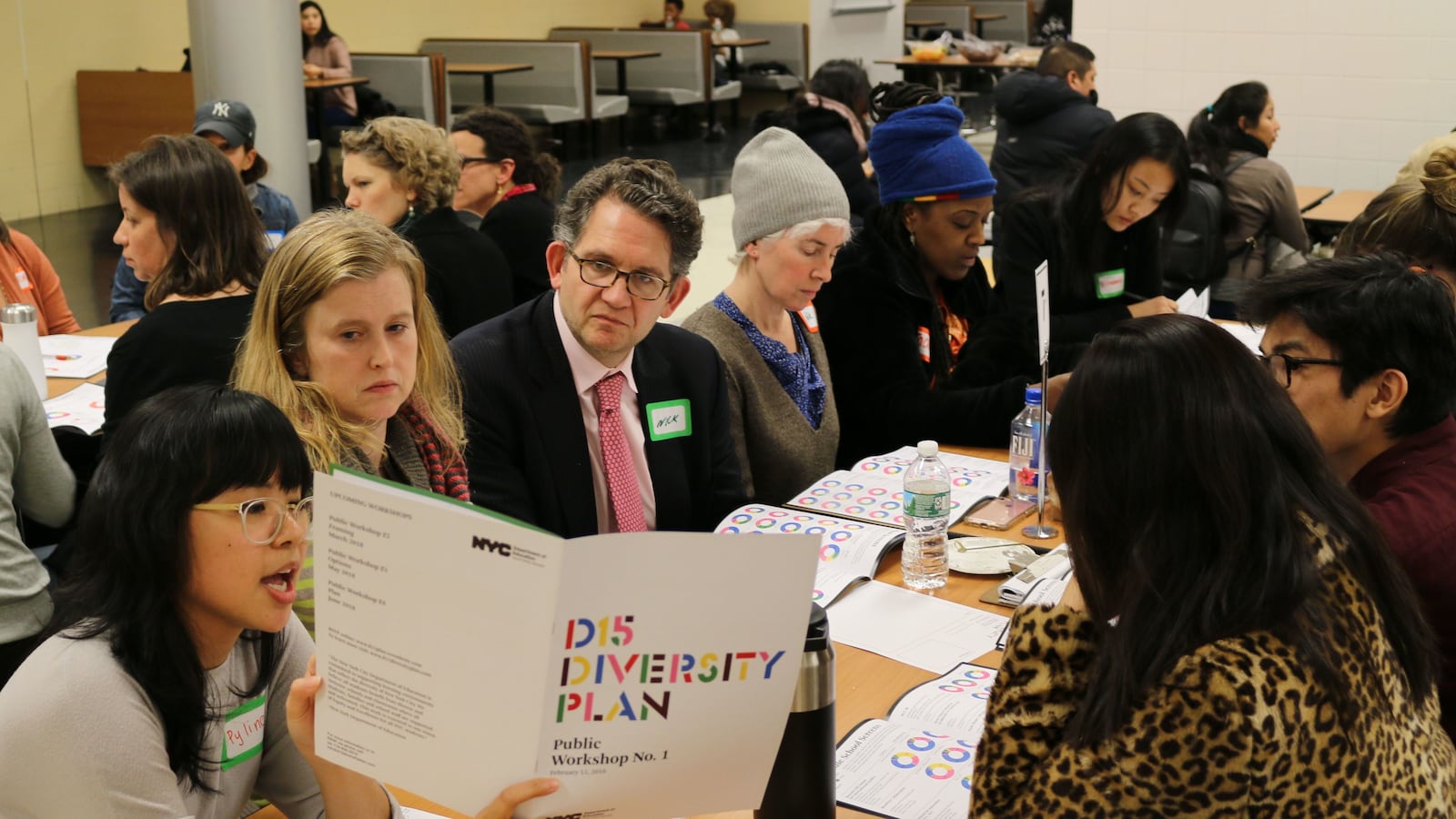The new school year could start off with a dramatic new integration plan for Brooklyn middle schools.
In a radio appearance Tuesday morning, schools Chancellor Richard Carranza said he expected to approve admissions changes in District 15 within the next 48 hours.
“I think that you can expect a decision from my office very, very soon,” he said. “I’m really excited about it.”
The plan has been years in the making, and it comes on the heels of a different, more controversial move to desegregate middle schools in Manhattan.
Here’s a guide to help you get up to speed on the latest proposal, which affects schools in brownstone neighborhoods such as Park Slope and Carroll Gardens, and immigrant enclaves such as Sunset Park and Red Hook.
What’s being proposed?
The proposal is sweeping: It calls on the city to completely eliminate selective admission criteria at middle schools in District 15, and to give underserved students priority in the application process. Advocates are also pushing a number of initiatives to make schools more open and inclusive of all students.
Under the current system, families in District 15 apply to middle schools rather than being assigned to a school based on their address. All but one of the district’s middle schools are “screened” — meaning they set admissions criteria based on factors like a student’s fourth grade test scores or report card grades.
Under the proposal, families would still be free to choose which schools to apply to. But screening would be eliminated — even auditions for performing arts programs would go away — and replaced with a lottery. In an effort to enroll a similar share of students who are harder to serve, every middle school would give priority for 52 percent of seats to students who are poor, learning English, or live in temporary housing. That percentage is in line with the district average.
The plan offers a stark alternative to the way many schools in New York City currently enroll students: About a quarter of all middle schools screen applicants — a practice that is often seen as a way to help keep middle class families in the school system. But critics say it exacerbates segregation, since disadvantaged students are more likely to struggle in school, and middle class families are better positioned to navigate a complicated admissions system.
In addition to the admissions changes, the plan for District 15 calls for anti-bias training, hiring more teachers of color, and ensuring equal investments in programming across schools. Advocates say those kinds of moves, among many others that have been recommended, are important for making sure integration goes deeper than just demographic changes.
How did we get here?
The proposal is the result of months of public input, dozens of public meetings, and years of advocacy.
The city hired WXY Studio, an urban planning and design firm, to solicit ideas and gather feedback from parents, educators, and activists across the district. That work began this past winter, with a series of public workshops, intimate meetings with PTAs and community groups, direct phone calls to local leaders, and email blasts to parents. It culminated with a set of recommendations based on what community members said they wanted.
But the integration push in District 15 goes even farther back, with parents and the local Community Education Council lobbying for years for a process like the one that ultimately played out. Integration advocates have called it one of the more thoughtful and inclusive processes to date, with small group sessions that allowed parents to talk face-to-face about complicated topics, and an emphasis on including parents who don’t speak English as a first language.
Advocates say that’s why they were able to come up with such a sweeping proposal — without the amount of pushback that integration plans in other districts have generated.
Matt Gonzales, who lobbies for school integration with the nonprofit New York Appleseed, said the one-on-one conversations allowed “people to humanize each other.”
“I really applaud the process because it did mitigate some of the backlash and some of the racist, classist, coded things that have been said” elsewhere, he said.
Still, as with any dramatic changes involving schools, race, and class, the plan hasn’t been completely well received. Some have said even more should have been done to make sure a more diverse group of voices were included. Other parents have said they’re reluctant to raise their concerns because they don’t want to be perceived as fighting integration, or worry that the changes could unintentionally encourage neighborhoods to gentrify further.
What happens next?
The proposal on the table now is just a recommendation that requires Carranza to sign off. He could choose to approve some parts of the plan and not others, or add new elements.
But advocates are expecting the final changes to hew closely to what they’ve proposed.
Carranza has signaled his eagerness to approve what the community has come up with, and has questioned the very screening process that parents now want to eliminate. Plus, the education department was at the table every step of the way while the plan was being created.
“I am really excited about the work that the parents, and teachers and principals and community members have done in District 15,” he said Tuesday on WNYC’s The Brian Lehrer show. “Talk about a thoughtful and very powerful way of changing the way we look at opportunities for our students.”
Carranza said final approval would come within the next few days.

